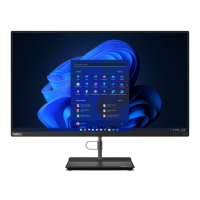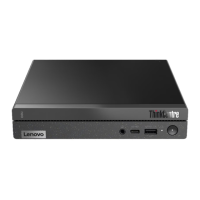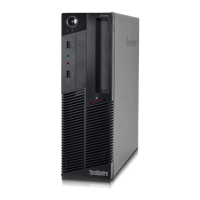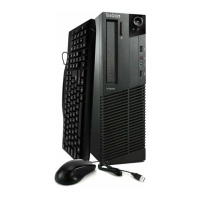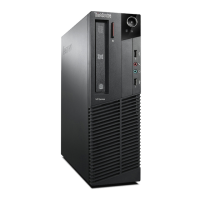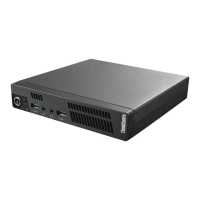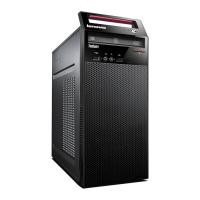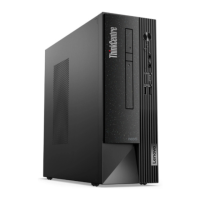
Do you have a question about the Lenovo ThinkCentre neo 50s Gen 3 and is the answer not in the manual?
| Memory | Up to 64GB DDR4 |
|---|---|
| Operating System | Windows 11 Pro |
| Chipset | Intel B660 |
| Storage | Up to 1TB SSD |
| Graphics | Intel UHD Graphics |
| Form Factor | Small Form Factor |
| Weight | Approx. 4.5 kg (9.92 lbs) |
| Front Ports | 2 x USB 3.2 Gen 1 1 x USB-C 3.2 Gen 1 1 x Headphone / Microphone Combo |
| Rear Ports | 2 x USB 2.0 2 x USB 3.2 Gen 1 1 x DisplayPort 1 x HDMI 1 x Ethernet (RJ45) |
| Expansion Slots | PCIe x16 |
| Power Supply | 260W |
| Wireless | Wi-Fi 6, Bluetooth 5.1 |
| Ports | USB, HDMI, DisplayPort |
Diagram and list of front ports and indicators.
Diagram and list of rear ports and connectors.
Lists dimensions, weight, hardware, power, CPU, memory, storage, video, expansion, network features.
Physical dimensions of the computer.
Details about USB connectors, types, and transfer rates.
Explanation of factors affecting USB transfer rates.
Intro to Ubuntu Desktop, Gnome, launching apps.
How to launch apps using Super key or Activities menu.
Guide to connecting to wired and wireless networks.
Instructions for connecting a projector or monitor.
Steps to connect Bluetooth devices.
Instructions for installing, removing, and recording discs.
Instructions for installing and removing media cards.
Methods for physically securing the computer.
Using a padlock to secure the computer cover.
Using a cable lock to secure the computer.
Setting up UEFI BIOS passwords for security.
Explanation of password types: power-on, supervisor, hard disk, system management.
Setting a password required at startup.
Instructions for managing UEFI BIOS passwords.
Overview of BIOS features for securing computer and information.
Procedure to securely wipe storage drive data.
Steps to restart and enter BIOS setup menu.
Guide to using keyboard keys for BIOS navigation.
How to change or select boot device priority.
Guidance on modifying BIOS settings before OS installation.
Info on updating UEFI BIOS via software or web downloads.
Detailed steps to recover from failed BIOS update.
Procedure to clear CMOS settings and restore BIOS defaults.
General steps to check before troubleshooting.
Section for resolving specific computer problems.
Troubleshooting for computer not starting up.
Solutions for sound output issues from external speakers.
Troubleshooting for Ethernet and Wi-Fi connectivity.
Troubleshooting for performance issues like low storage/memory.
Troubleshooting for missing or undetected storage drives.
Troubleshooting for CD/DVD drives and media.
Troubleshooting for serial connector access issues.
Troubleshooting for USB device issues.
Troubleshooting for software or application issues.
Lists Customer Replaceable Units (CRUs) for the computer.
Provides instructions on how to remove or replace CRUs.
Detailed steps for replacing a 2.5-inch hard disk drive and bracket.
Detailed steps for replacing a 3.5-inch hard disk drive and bracket.
Instructions on contacting Lenovo support for assistance.

